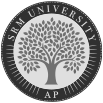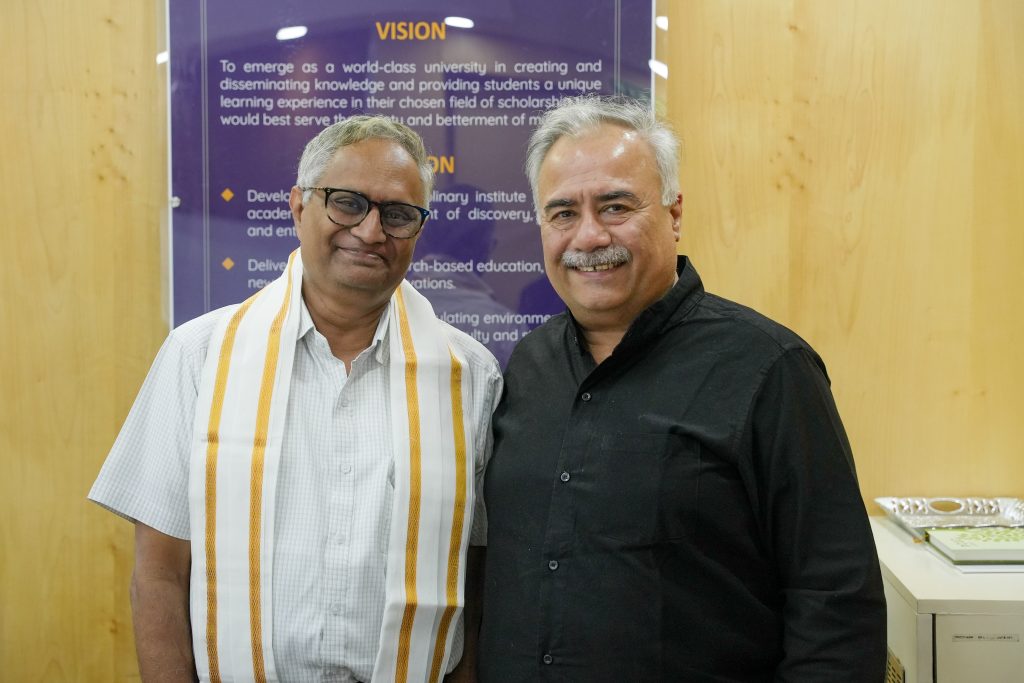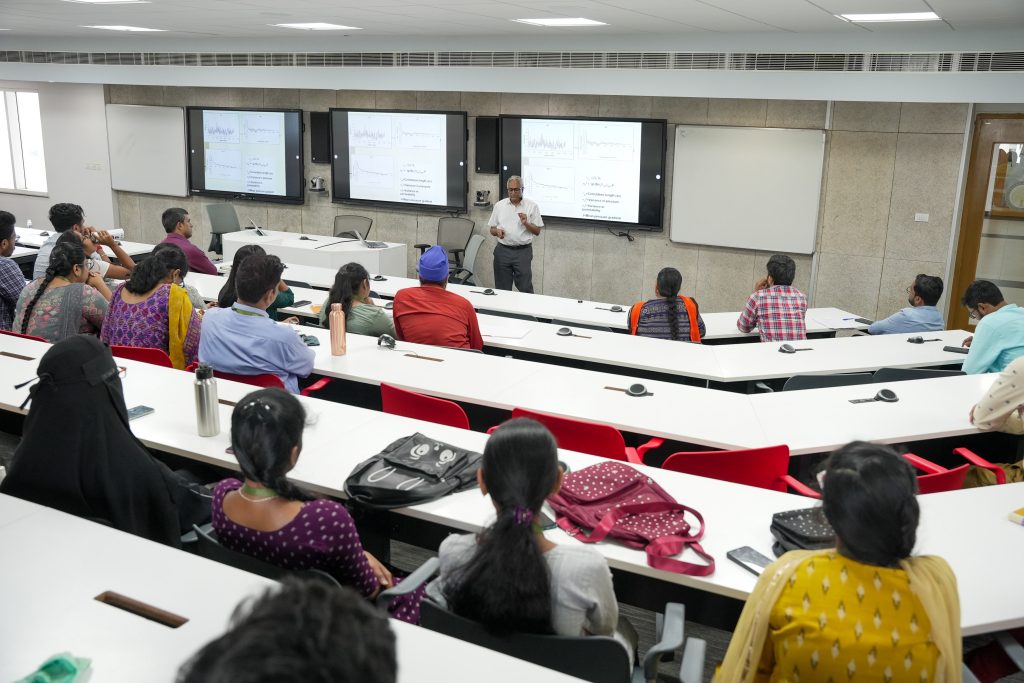Current Happenings ENVS News
- Rethinking Ionic Liquids as an Environment-friendly Solvent February 18, 2024
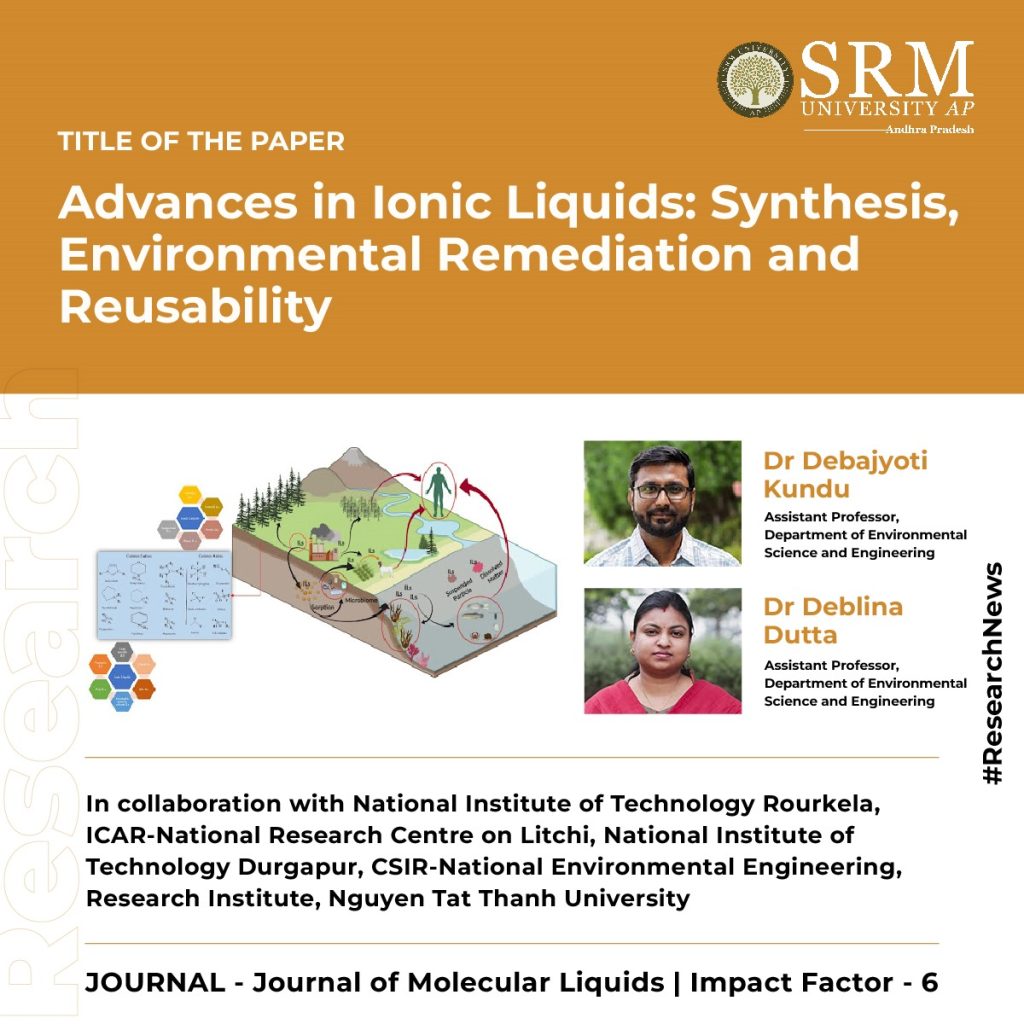
Dr Debajyoti Kundu and Dr Deblina Dutta, Assistant Professors, Department of Environmental Science and Engineering, have conducted seminal research on Ionic Liquids (ILs) in their paper “Advances in ionic liquids: Synthesis, environmental remediation and reusability” published in the Q1 journal, Journal of Molecular Liquids with an impact factor of 6. In the research article, the faculty duo have delved into the unique properties of ionic liquids, focusing on their role in environmental cleanup and showcasing their ability to combat pollutants. Various methods to recycle and reuse ILs, develop eco-friendly ILs, and scale up their application for effective environmental remediation have also been extensively explored.
Abstract
Ionic liquids (ILs) are next-generation solvents synthesised by organic salts, possessing negligible vapour pressure and low flammability. They possess high thermal and electrochemical stability, can be reused for multiple cycles, and their properties can be tuned according to the components used in their synthesis. Hence, ILs are considered to be potential alternatives for conventional organic solvents for numerous applications such as environmental remediation, nanoparticle synthesis, catalysts in various chemical reactions, solvents for the extraction of biomolecules from recalcitrant lignocellulosic biomass, etc. In this review article, the holistic approach of ILs, starting from various techniques adopted for their synthesis along with its critical review, is discussed, followed by a detailed discussion of the mechanism involved in the remediation of environmental pollutants using ILs. Further, in-depth documentation of various environmental pollutants remediated using ILs has been done to date. One of the major drawbacks of solvent application is the reusability factor, and hence, in this review article, techniques adopted to recycle/reuse ILs have been discussed. Further, the adverse effects of using ILs for environmental remediation have been comprehensively discussed to present a holistic view. Future studies should focus on synthesising environment-friendly ILs and their field-scale applications for environmental remediation.
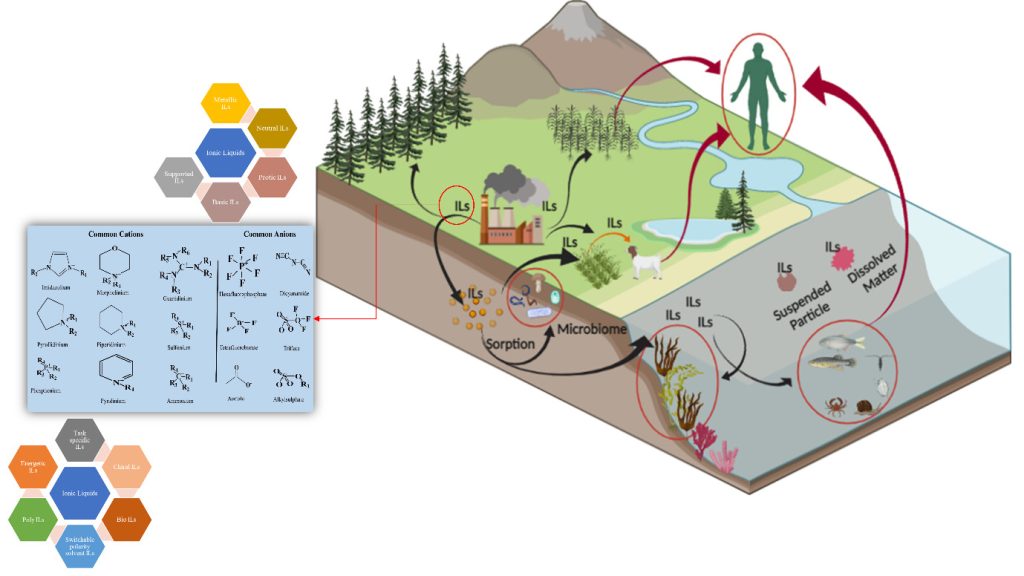
Practical implementation/social implications of the research
Their research on Ionic Liquids (ILs) presents a transformative approach to environmental challenges. By applying ILs on a larger scale for cleaning polluted air and water, promoting recycling and reusability, and developing eco-friendly ILs, the work has direct implications for industries and communities. The adoption of IL-based technologies contributes to efficient environmental cleanup and aligns with the growing societal demand for sustainable practices. Successful field-scale applications and public awareness initiatives can lead to a cleaner and healthier environment, demonstrating the tangible benefits of incorporating ILs into real-world solutions and fostering a more responsible and eco-conscious society.
Collaborations:-
- National Institute of Technology Rourkela
- ICAR-National Research Centre on Litchi
- National Institute of Technology Durgapur
- CSIR-National Environmental Engineering Research Institute
- Nguyen Tat Thanh University
Dr Kundu and Dr Dutta remarks that their future research in the realm of Ionic Liquids (ILs) will prioritise the development of environmentally sustainable synthesis methods, rigorous assessments of biodegradability and toxicity, and integrating ILs into industrial processes. Scaling up studies to evaluate their effectiveness in large-scale environmental remediation, investigating public perceptions, and fostering multidisciplinary collaborations with experts from diverse fields will be crucial for the responsible adoption of IL-based technologies. Additionally, focusing on life cycle assessments, exploration of novel applications, policy recommendations, and educational outreach can collectively contribute to advancing the understanding and practical implementation of ILs, ensuring a holistic and impactful approach to their environmental applications.
Click to read the article!
Continue reading → - Exploring Potential Collaboration with SUNY ESF February 2, 2024
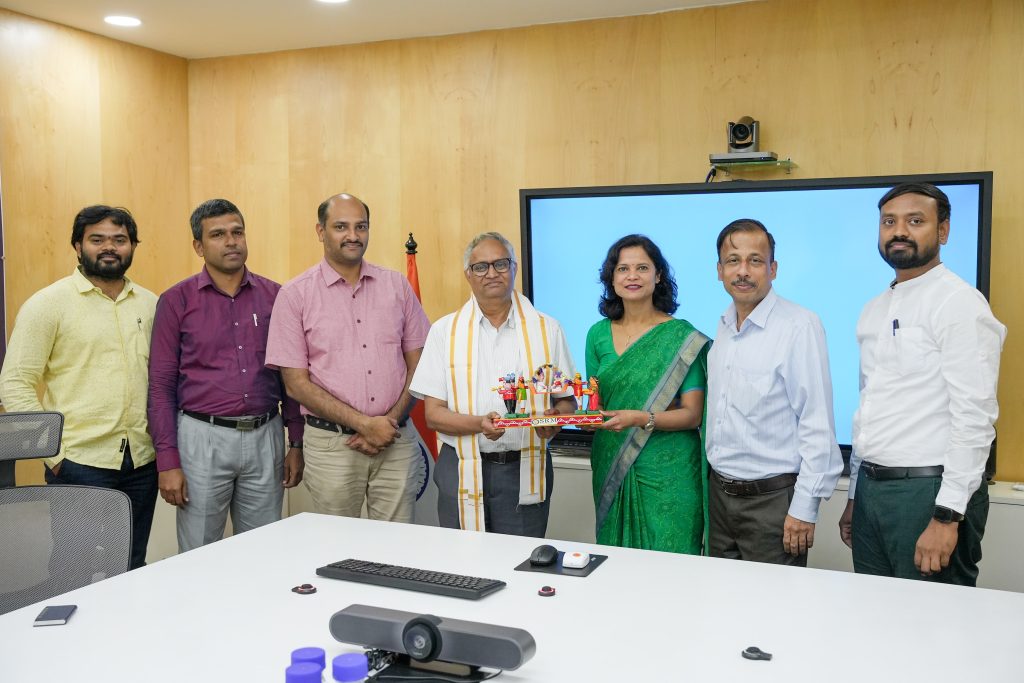
Prof. Bandaru Ramarao, who currently serves as the Chair of Chemical Engineering at SUNY College of Environmental Science and Forestry, visited SRM University-AP to explore potential collaborations between the two prestigious institutions.
During his visit, Prof. Ramarao conducted an engaging session with the Vice Chancellor, Prof. Manoj K Arora; Director of International Relations and Higher Studies (IR&HS), Ms Aditi Jain; and senior members of the faculty where they discussed various opportunities for collaboration, including the possibility of establishing an association for Masters and Ph.D. students, faculty and student exchange programmes, and scholarship collaborations for faculty members. Dr Jayaseelan Murugaiyan, Associate Dean in-charge of Sciences, proposed that the varsity could opt for a co-guide system between SUNY ESF and SRM AP.
Prof. Ramarao also delivered a seminar focused on “Techniques for Analysis of Transport Processes in Fibrous and Porous Media,” which was attended by enthusiastic masters and research scholars from the Department of Environmental Science and Engineering. The session was highly informative and provided valuable insights into the techniques used for analysing transport processes in fibrous and porous media. The event concluded with an interactive Q&A session. A token of appreciation was presented to Prof. Ramarao, culminating the visit into a huge success and paving the way for fruitful collaborations between the two institutions in the future.
Continue reading →

